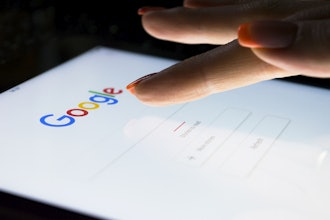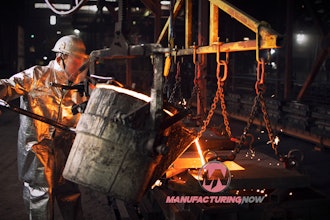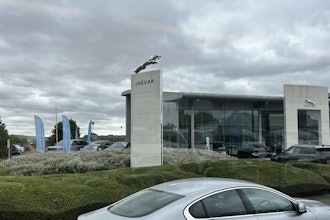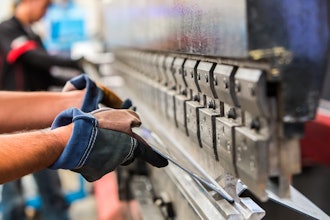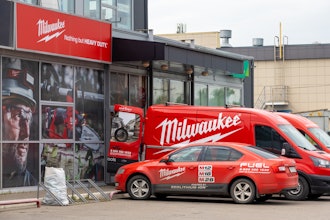We probably won’t know what the going market for fair trade electronics is any time soon, and I’m concerned that the zealous, constant fight to have the most inexpensive device with the most functions and gadgets will keep hipsters and the rest of us from taking a stand for devices made fairly.
I’ve gone to school at two universities that most people would characterize as quite liberal. Bleeding heart liberal, even.
At both, I remember seeing zealous campaigns over worker conditions in the factories that produced college apparel and advertisements for coffee shops that were fair trade. I walked by, but wasn’t a participant. As far as I was concerned, the term “fair trade” applied mostly to t-shirts and chocolate, and not much else.
But earlier this month, as news broke about worker suicides at Foxconn the idea of fair trade came up in the context of consumer electronics. I was intrigued.
For those who need a refresher, Foxconn is a contract manufacturer in China that makes, among other things, iPads and iPhones for Apple. Their facility in Shenzhen employs and houses more than 300,000 people and has had a recent number of high-profile suicides and suicide attempts – 14 in all.
Taiwanese scholars and Manufacturing.net’s own Amanda Earing have been part of a chorus of criticism over the poor working conditions and harsh management at the plant.
As part of the response to the suicides and criticisms, Foxconn announced two pay raises, doubling the basic worker pay to 2,000 yuan – about $293 – per month.
For all intents and purposes, $293 a month is basically nothing. Even a small raise will increase the production cost of items coming from this factory and Foxconn has been clear they’ll pass that increase on to corporate customers Apple, Sony, Dell, Nokia, HP and others.
According to a February 2010 analysis by iSuppli, the total manufacturing cost for the iPad ranges from $10 for models without 3G, to $11.20 for models with 3G. Estimates from iSuppli also indicate that the total materials and manufacturing for the iPad models is between about $230 and $346. If worker pay goes up, these numbers will increase.
This presents an interesting set of conundrums for these corporations. Do they absorb the cost themselves or pass it on to customers? If they pass it on, how do they market the increased cost? And how will consumers respond to the change?
In response to the Foxconn controversy, ZDNet blogger Tom Foremski suggested that we’re on the verge of the first fair trade tech company or an electronics device that has an entirely fair trade supply chain:
All technology products trend towards becoming commoditized — that’s just how things work. How do companies fight commoditization? It’s done through differentiation. … Fair Trade electronics is another way companies will be able to differentiate themselves from competitors. Fair Trade will drive sales and it is a high profit value add.
Apple has been getting dinged more than the other Foxconn customers in this whole story, and I think for good reason – fair trade makes sense for Apple and for Apple’s customers.
As Foremski suggests, Apple appeals to hipsters and artists, to people who like to “think different.” If you walk into any fair trade coffee shop on State Street here in Madison, you’ll see tables full of MacBooks and iPods and coffee in reusable containers to protect the environment. Foremski characterizes the Apple customer, somewhat accurately, in this way:
Fair Trade Apple products would make the fanboys even more annoying. They’d be walking around, their noses in the air, exuding moral superiority from every pore, and their farts would smell better than roses. It could become suffocating if you were caught in a confined space with one of them.
In addition to fanboy consumers, Apple also has a high profit margin – 21 percent – and nearly $40 billion in cash.So Apple could afford the cost of fair trade and it has a customer base that – at least in theory – agrees with the concept. After all, if hipsters are willing to pay a little more for a socially responsible latte, they should make the same choice for their iPhone.
Would we all be willing to pay more to know that our iPad or eReader or smartphone or computer was made under humane conditions and that workers were paid a wage they could live on? And how much more would we be willing to pay for a fair trade device?
In July 2009, Harvard Business Review blogger Umair Haque estimated that a “good” iPod – one made under decent labor conditions – would cost about $58 more than an “evil” iPod. This estimate held across the iPod family, with Haque estimating that “good” iPods would cost between 20 and 30 percent more to produce.
Let’s assume, for arguments sake, that Haque’s numbers hold true across all Apple products and a “good” iPad or iPhone or iPad would be about 25 percent more. That bumps the $499 iPad up to about $625 and the iPhone 4 to almost $230. Too much?We probably won’t know what the going market for fair trade electronics is any time soon. And I’m concerned that the zealous, constant fight to have the most inexpensive device with the most functions and gadgets will keep hipsters and the rest of us from taking a stand for devices made fairly.
But it’s an idea, isn’t it?
Kim Ukura is the associate editor for Product Design & Development magazine (www.pddnet.com). For feedback on this article, contact Kim at [email protected].









